
This article is part of our #StoriesofChange where we profile the work of our partner countries in developing climate actions in transport. Read more #StoriesOfChange and follow the Hashtag on Twitter.
The first road for electric vehicles in all of Latin America is located in Uruguay. In recent years, the National Electricity Company (UTE) has worked to establish the ideal conditions for the country to transform towards sustainable mobility: installation of charging stations for taxis in Montevideo, the extension of electric vehicle routes and the conversion of the utility fleet. It is worth mentioning that Uruguay’s electricity matrix is almost entirely renewable. Against this backdrop, in October 2018 we initiated a process to develop a National Urban Mobility Policy.
When we landed in Montevideo, we found a working team that was far from traditional. “How to make a national mobility policy without the involvement of the Ministry of Transport and Public Works (MTOP)” was one of my first concerns. Our counterparts also found us curious: a German cooperation working in Uruguay with a team led from Chile, under a programme financed by the European Union.
We needed a working strategy adjusted to this scenario. Now, after four years, I can say that this diversity of experiences enriched the project like you have no idea. This is what I want to tell you about.
The first thing we needed to build a NUMP was the consolidation of the Project Working Group (GTP), led mainly by the ministries of environment –the leading entity for the climate agenda and focal point for the EUROCLIMA+ programme– and energy –the leading entity for the e-mobility and sustainable energy grid agenda.
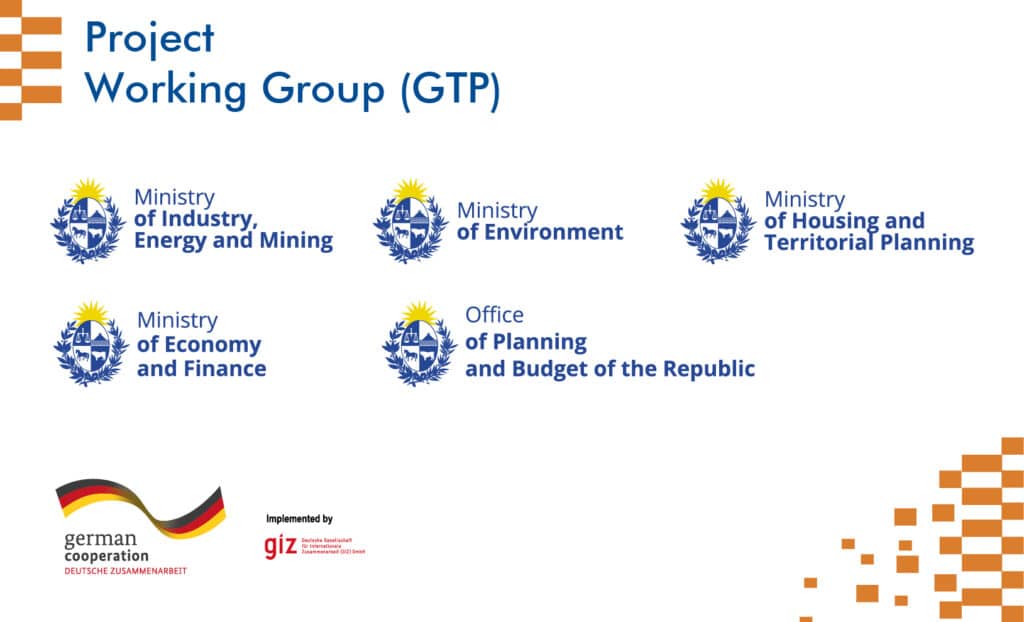
Once our team was in place, we found a country that was already in the midst of a participatory process in which the transport and mobility sector was integrated. More than 300 people from more than 100 public institutions from the public, private and civil society sectors were convened for the elaboration of the National Climate Change Plan (NCCP).
Following this line of action in a coherent and coordinated manner, the first success for the project: the NUMP Uruguay would be integrated into national climate strategies.
The diagnosis of the status quo situation started in five cities. The GTP visited each city twice and organised a large-scale initial and final diagnostic phase. This data collection on mobility challenges and analysis added by expert consultants had two intentions:
In a second step of the project, we organised a series of workshops to gather the perspectives of the private sector, academia, NGOs and civil society representatives with an interest in urban mobility.
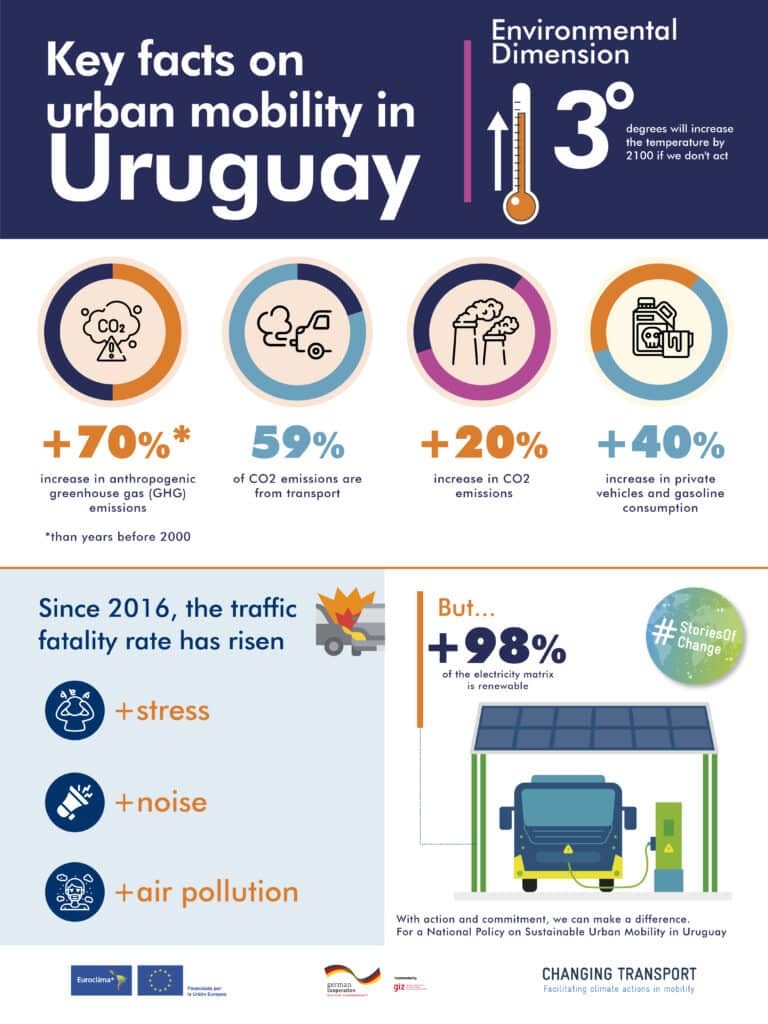
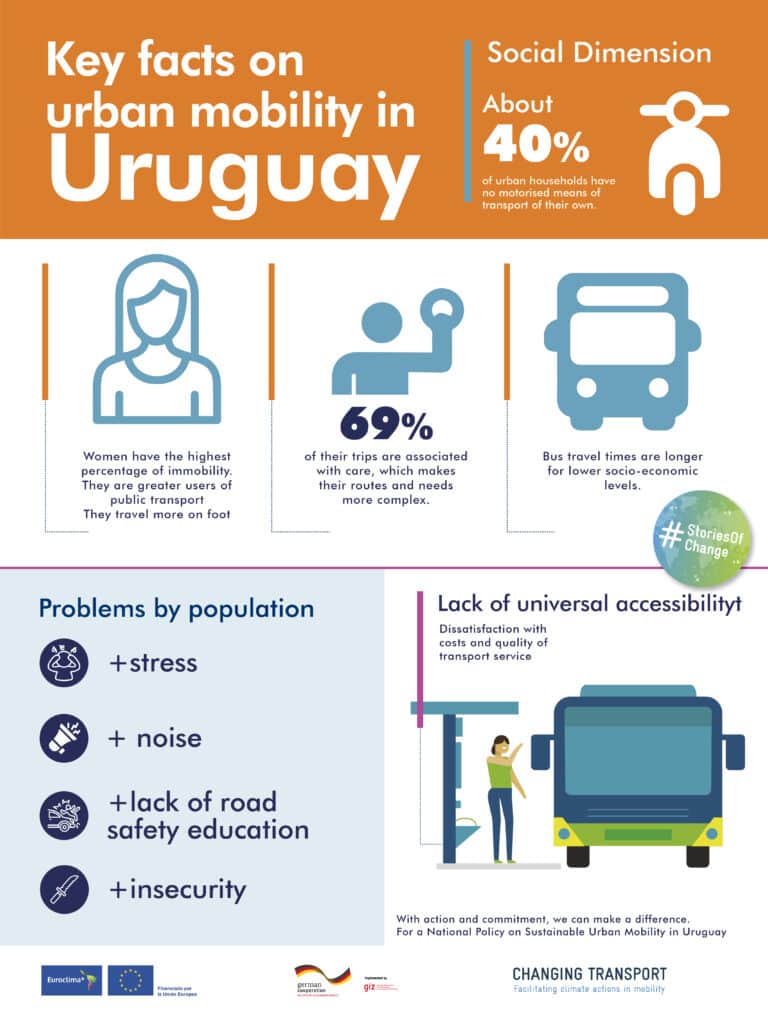
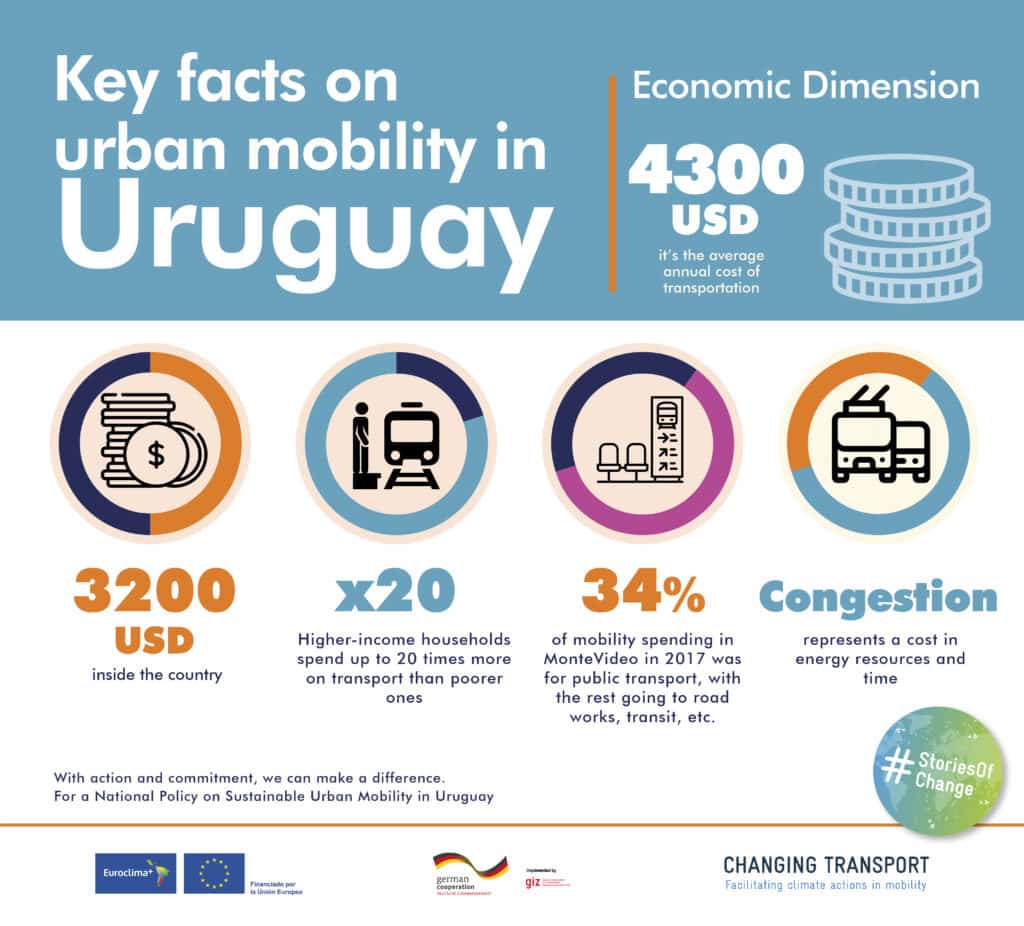
In the private sector, public transport companies and taxi drivers are interested in active participation in discussions with departmental governments and ministries involved in mobility. Indeed, this sector has been instrumental in actions undertaken in recent years to promote electric mobility. Different actors have helped to provide information on government assistance programmes, training opportunities and new regulations.
This process allowed the initial idea of a NUMP focused on electromobility to be transformed into a more holistic, people-centred vision. The GTP adopted the Avoid-Change-Improve (ASI) approach for this project: promoting a series of measures to “avoid” emissions where possible, “shift” transport demand towards greener alternatives, and “improve” existing transport systems.
“The first thing is to take into account the opinion of all the actors involved in the process of electric mobility, otherwise it would be impossible to receive the contributions that help us build the idea that electric mobility is just one part of sustainable mobility, and not the heart of the matter.”
Diego Betancur, Head of Electric Mobility Project, UTE
Another essential aspect of building a NUMP is to consolidate the horizontal structure. In October 2022, we started internal work to define the vision and objectives of the policy. These discussions take time, especially in online meetings. Despite this scenario that we all went through due to the COVID-19 pandemic, these hours of exchanges allowed us to build a coordination where we made mutual and consensual decisions.
The GTP has the technical responsibility to develop the NUMP so that it can be adopted at the political level. Its way of working is to some extent a replica of the Working Group on Energy Efficiency in Transport, an important promoter of electric mobility in Uruguay that was chaired by the Ministry of Industry, Energy and Mining (MIEM) and has representatives from the ministries of environment, transport, economy, territorial planning, the national public company for electric mobility (UTE) and the Departmental Municipality of Montevideo (IM).
Inspired by these years of joint work, they proposed the creation of the Inter-institutional Commission for Sustainable Mobility (CIMS). This commission will lead the implementation of the NUMP and fill the gap between the national and city levels.
The GTP has demonstrated agile management based on flexibility and strategic leadership. The co-design process now reflects the vision and role of each sector within the mobility ecosystem.


To realise the vision and objectives that we have consolidated over the years, a NUMP must integrate measures and actions that reflect the complex reality of the country.
Most of Uruguay’s cities are small, with less than 100,000 inhabitants. This means that public transport is often not an economically viable option due to issues of scale. This reliance on private vehicles is a barrier to mobility for people without sufficient means.
While the project initially appeared as an opportunity to develop a policy centred in e-mobility, it has evolved into an ambitious multi-sectoral policy focused on the important role of mobility in urban life to achieve sustainable development, informed by people-centred principles and composed of measures that reflect this.
The NUMP Uruguay is clear and pragmatic; roles are identified and the institutional framework is in place. The participatory process is flourishing in its ability to manage unpredictability and risk. Information on the policy has been widely disseminated before its official launch, and city-level actors are already implementing sustainable mobility.
Here are some of its main aspects.

An active process of exchange amongst a diversity of stakeholders can lead to an unstructured proliferation of ideas. Accordingly, a structured dialogue process is important. In line with this insight, we adopted the national policy design methodology proposed by the MobiliseYourCity alliance. This four-step methodology addresses all aspects of importance when developing national policy, ensuring it is sustainable, coherent, and applicable.
Furthermore, rather than a strict step-by-step recipe, the methodology is a holistic framework that sets a flexible path for achieving a quality outcome. Actors at the national level need to make use of their national capacity to coordinate stakeholders both horizontally and vertically.
The adopted strategy for promoting municipal engagement with the national vision was to provide cities with a strong knowledge base for change. The National Mobility Policy accompanied by two guidebooks for municipal authorities. Specifically, the mobility planning guide supports strategy development at the city level. It includes measures and recommendations to be considered when planning a sustainable multimodal mobility system. Cities also received an e-mobility guide that offers solutions and highlights aspects to consider when building an e-mobility system at the city level.
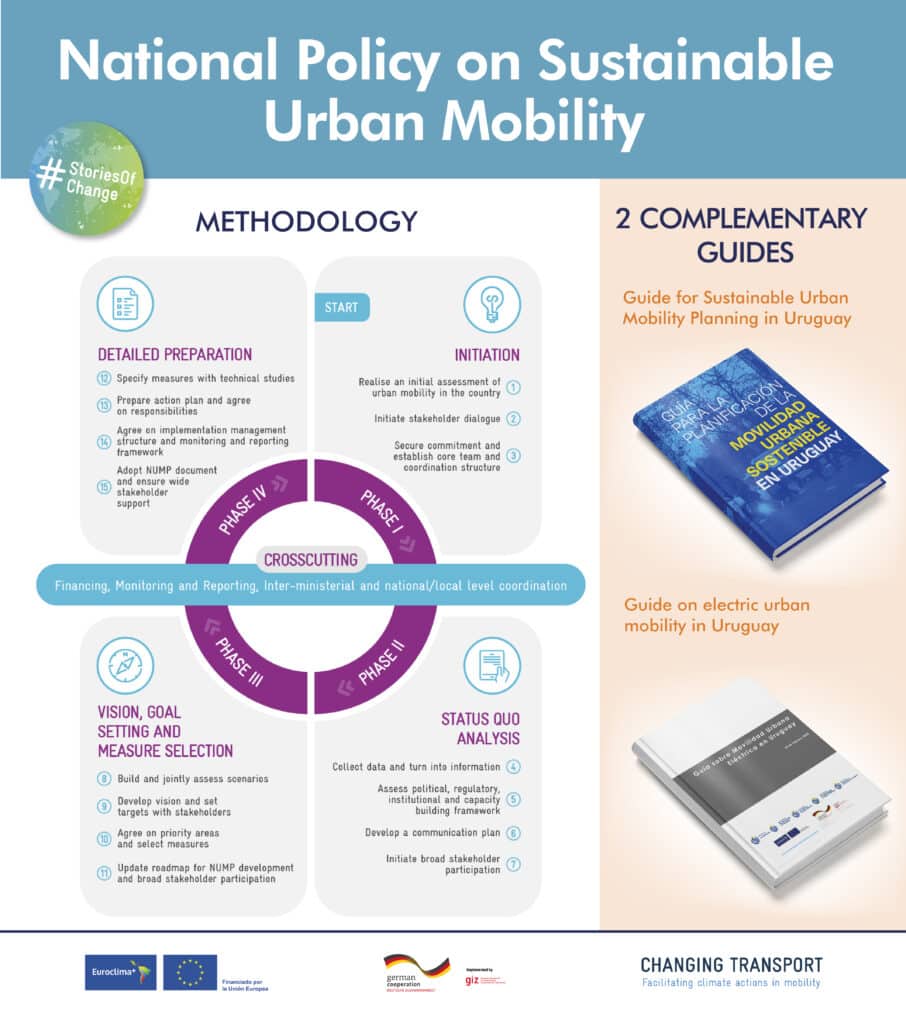
While the need to consider the perspectives of each stakeholder group slowed down the policy development process, the inclusion of diverse vantage points clearly improved the setting of objectives and allocation of responsibilities.
At the same time, vertical coordination is crucial for involving actors and ensuring the real-world viability and implementation of the policy. It is important to carry out this process in several steps in order to recognise challenges and identify solutions. For example, if the national government is promoting sustainable mobility but not necessarily providing resources to meet stated goals, municipal actors will need to tailor their ambitions accordingly.
In this context, communication is key. We would advise implementing a dialogue process that engages stakeholders to the greatest extent possible. The input provided by stakeholders should be integrated in an iterative process. In this way, one can harness the cooperation of stakeholders who are committed to the spirit of the policy – this, to be sure, is one of the most valuable outcomes of the policy process.
What’s next?
Now that the policy framework had been established and cities understand the need to elaborate their own action pathways in sustainable mobility, the NUMP process is entering its scaling-up phase. As a beneficiary of the Diálogo-País (Country-Dialogue) project, Uruguay is placing an emphasis on two lines of action: first, on the building of institutional capacity; and second, on the piloting of initiatives at the city level.
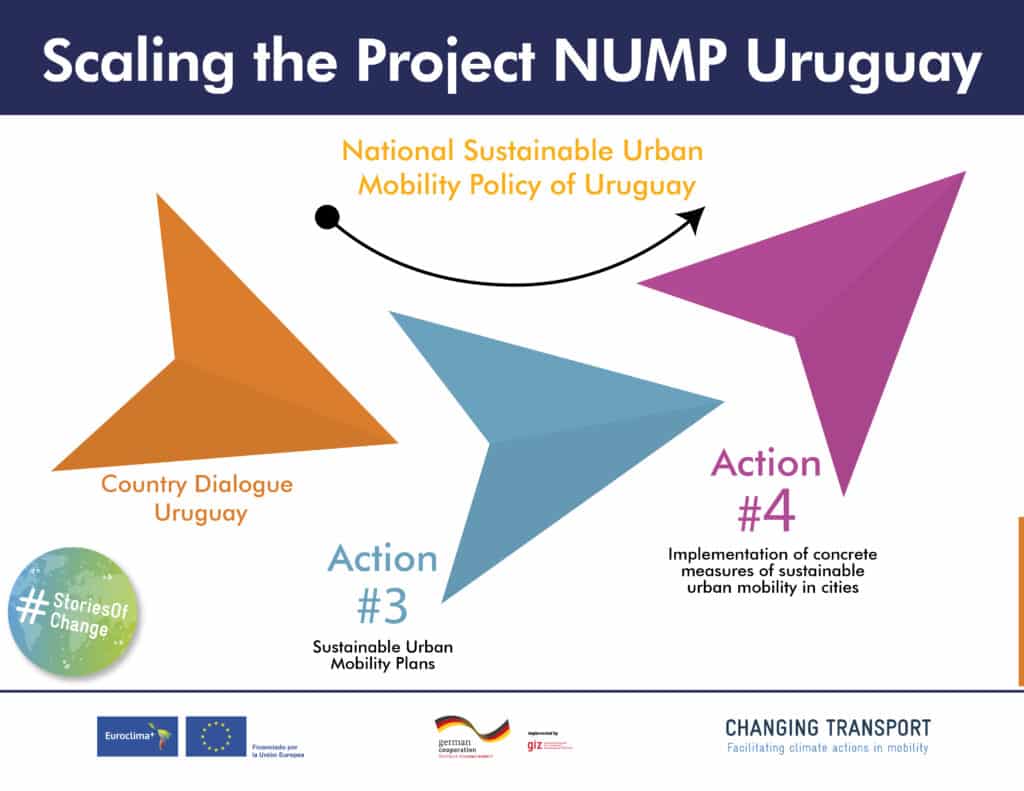
Within Action No. 3 for building institutional capacity, the Sustainable Mobility Commission will work to define how to implement National Mobility Policy. The process will build a bridge between the national and municipal levels in the Uruguayan legal framework. This CIMS will have a help desk that will work with cities to support the process of designing sustainable mobility plans and pilot projects. This help desk will facilitate technical support as well as knowledge sharing. From this process, “lessons learned” will be scaled-up to other cities and a National Community of Practices will be established. Alongside direct experience with cities, the help desk will support national actors, helping them to steer the transformation towards sustainable mobility. With Action No. 4 related to pilot projects, the goal is to monitor changing mobility patterns in urban space through tactical interventions, including potentially the deployment of small EVs.
With its Diálogo-País, Uruguay will strengthen policy implementation while fine tuning its action pathway for achieving a net-zero mobility system.
“For us to learn from this process and acquire methodologies for the development of our Long-Term Strategy is very important, not least to focus on the transport sector, which will be a fundamental variable in the aspirational scenario to achieve CO2 neutrality by 2050.”
Juan Labat, Climate Change Office, Ministry of the Environment, 2020
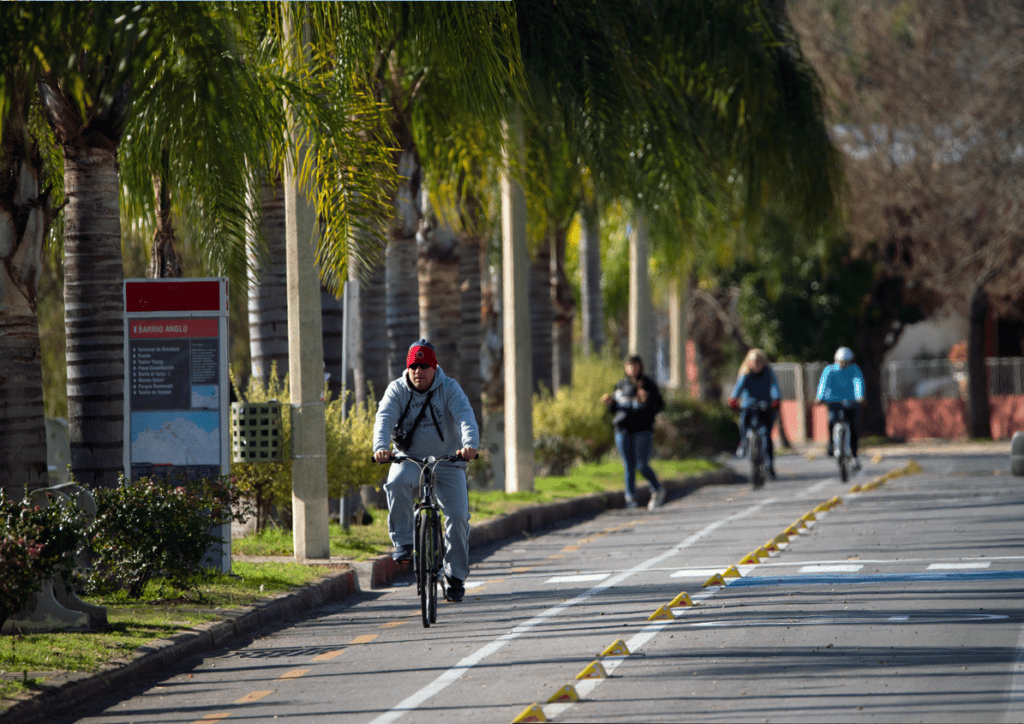
If you believe that you suffer (potential) negative social and/or environmental consequences from IKI projects, or wish to report the improper use of funds, to voice complaints and seek redress, you can do so using the IKI Independent Complaint Mechanism.